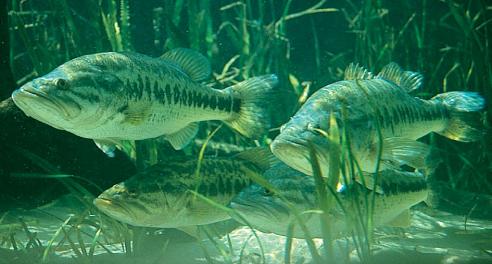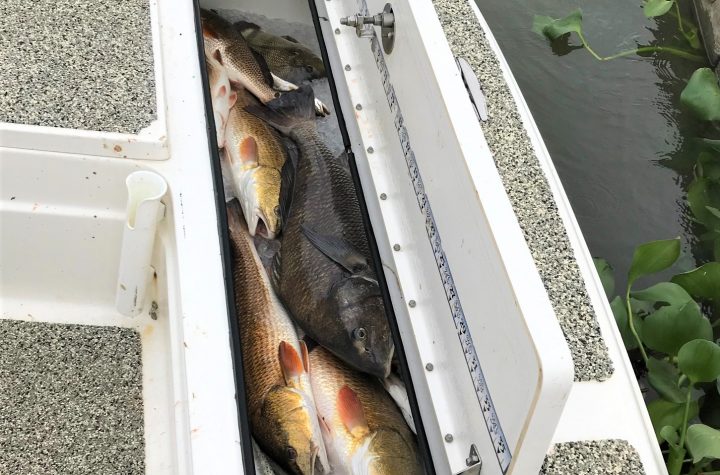
Like we said last week, hunting is winding down and thoughts are turning to fishing in fresh water. Although we are very blessed to be able to fish year round, many lay the rods down to pick up bows and guns to kill game for sport and sustenance. Now it’s time for fishing fever to begin heat up a little.
The weather is on the cold side, but fishing this time of the year offers the opportunity to catch a really big fish as they are “feeding up” to survive the rigors of the spawn. Fish are cold blooded, which means that ambient temperature affects their metabolism.
The temperature of the water is very cold; hence, metabolism is as low as it gets which translates into heavy weight gain for very limited activity. Bass don’t move very fast when the water is cold so to catch them one generally has to slow down their baits to make it easy for them to get it.
Let’s talk about three lures that might bend the odds in your favor to catch a fish of a lifetime. Crankbaits; these lures are more versatile than many anglers might think. They’re usually fished at a high rate of speed labeled “burning it”, but it’s time to lay that tactic down in the late winter and early spring.
Slow is the style that will trigger a strike from a big largemouth this time of year; painstakingly slow. So slow that you can count the turns one makes with their reel on the retrieve and feel each wobble that the lure makes.
Make your casts with letting your lure bump into something on every cast; a stump, a log or some branches and even the bottom works as well. The icing on the cake is to stop the retrieve for a second as the bait bumps an object. The strike is very light, more like the tap when you fish a worm. Sometimes it is undetectable by feel so watching your line is imperative when fishing a lure slowly.
Spinner baits; this lure is a favorite of many anglers as it’s easy to fish and is pretty weedless; not a lot of time spent going to get the bait unhung. Slowing your retrieve is paramount here as well.
A smaller spinner bait usually works well in warm water but you can upsize in the winter; big bait, big fish. Although a single spinner is the preferred model when the water is cold, tandem blades are effective as well but the speed of the retrieve needs to be slower to get the bait down deeper.
A single spinner will allow for a deeper retrieve and produce much more vibration that is good for cold water and lets a bass know something is coming its way. You can feel the wobble of the spinner very easily and that makes detecting the strike a little easier. Reeling the bait through cover is easier with a spinner bait because it doesn’t get hung up much.
Jig; last but certainly not least, the jig probably produces more big fish for bass anglers than any other single lure you could use. The jig was introduced in the south around 30 years ago. I was fishing tournaments at the time and it was a love/hate relationship because it fished so slow and anglers weren’t used to that.
Most of the hate changed to love as bigger and bigger stringers of bass were brought to the scales. The jig mimics one of the bass most prized entrees on the fish menu; the crawfish. Tipped with a trailer that floats, it’s very hard to find a lure that looks more like a crawfish than this.
If you’ve ever dropped a crawfish into an aquarium, they fall very slowly to the bottom with their claws and legs extended. That’s exactly what a jig with a trailer looks like. Once they hit the bottom, they extend their claws upward and take the “fighting position” and again the jig mimics that position.
When the crawfish is frightened, it scoots through the water and that’s what the crank bait and spinner baits look like retrieved through the water slowly. That is a big portion of what makes those three baits very effective in cold water; they look like crawfish. Bass may be feeding on bluegill or shad but they will never let a crawfish go by. It’s sort of like an appetizer on a menu, it’s irresistible.
Sac-a-lait will spawn pretty soon as well and the time is right for a whopper to add to your stringer. Some will still be caught out in the deep holes but they are moving to shallower water to lay their eggs. They school up like bluegill to spawn but the bigger ones will be loners.
Small jigs work really well under a cork but fishing them without a cork is a little trickier. The payoff is worth the extra effort, so take the time to learn this technique. Lowering the bait into a tree top will produce but fishing them free-falling either casting the bait or using a jig pole can be the best technique.
Live shiners are a top notch bait for hungry sac-a-lait either under a cork or fished without one. I learned a tip from one of the best; use your favorite colored jig and hook your live shiner on the jig’s hook. Try this one, I promise it will work.
Catfish spawn the latest in the spring but they start feeding up earlier. When the water gets as cold as it is now, cut bait works the best. It works better than live bait as well. The water usually is a little more stained because of the rains associated with cold fronts so smell is more important that sight.
Cutting the bait whether you use shad, bream or some other fish allows the blood and smell of the flesh to enter the water leaving a scent trail that can be followed rather easily by catfish.
The catfish are doing their thing right now as in the last three weeks, a fifteen pound and a ten pound catfish has been caught off my pier along with some other nice sized cats as well. Now’s the time to catch a big fish!! Remember to keep the slack out and set the hook hard. So until next time have fun in the outdoors, be safe and may God bless you!!





More Stories
Louisiana Outdoor Writers Association “Keeper of the Records” By Lyle Johnson
Outdoor Corner with Lyle Johnson Fishing Fever
The “Boot”